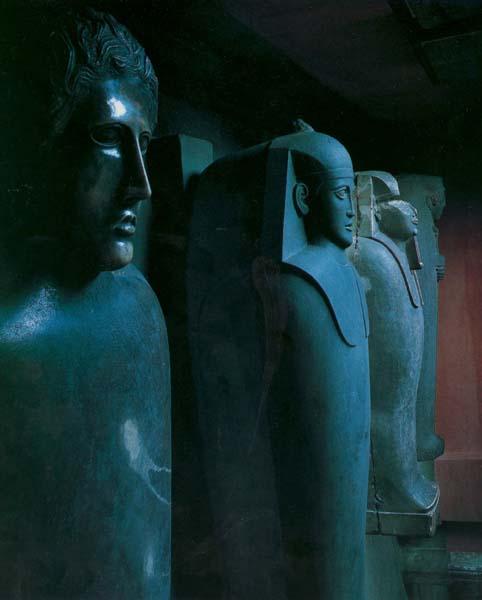Image Details

© Erich Lessing
Greek influence is apparent on the anthropoid coffin at far left, from the area of fourth-century B.C. Sidon (in ancient Phoenicia). Egyptian influence on Phoenicia dates to the Middle Bronze Age (c. 2000 B.C.) and eventually brought with it the practice of burial in anthropoid coffins. By the end of the fifth century B.C., however, Sidon came to be enmeshed, economically and culturally, with Greece. Phoenician anthropoid coffins not only resembled Greek art in style but also in material: imported Greek marble became increasingly popular. Phoenician trade brought anthropoid coffins to areas in the western Mediterranean and to the North African coast.
The middle two coffins seen here are in the Egyptian style and are said to come from the Lebanese Mountains, though this is questionable. The coffin at far right is from fifth-century B.C. Beirut and displays Phoenician stylistic details in its treatment of the hair and the headdress.
